Soviet military bases in Latvia
IV Soviet Occupation
A total of around 400 units of Soviet troops were stationed in Latvia, in about 500 facilities, making for a total of more than 50,000 military personnel.
More information sources
Book "Latvia - Under the Rule of the Soviet Military"
The Latvian Occupation Research Society (LOIB) has published a joint work by three authors - Latvia under Soviet Military Rule, 1939-1999.
The book tells how the occupation of Latvia took place, how Soviet army units were deployed on the territory of Latvia, how Latvia was flooded with Soviet military bases, and what losses the occupation caused to Latvia's economy and ecology.
The authors explain the legal aspects of the occupation and how to calculate the losses caused to Latvia during the Soviet occupation. The publication is supplemented with a map of Latvia, which marks the locations of the largest Soviet military bases in the territory of Latvia.
The book "Latvian-USSR military base. 1938-1998: materials and documents on the presence of the Soviet army in Latvia and its withdrawal"
The book compiles materials and documents on the deployment and presence of the USSR army and armament in Latvia from 1939 to 1998, when the last military facility of the Russian Federation in the Republic of Latvia — the Skrunda radar station “Dnepr” — ceased to operate. The authors were closely connected with the process of the withdrawal of the Soviet army, therefore they can provide information from first-hand sources. For example, Ilgonis Upmalis was the head of the Bureau of Control of the Withdrawal of Armed Forces under the jurisdiction of the Russian Federation, and J. Dinevičs, a deputy of the Latvian Parliament and Minister of State, led the Latvian delegation to the interstate negotiations. Providing an insight into the entry of the Soviet army into Latvia and its stay here, the authors focus in more detail on the process of the withdrawal of the Russian army, the successor of the former USSR army. The book publishes many documents and their facsimiles, photographs, extensive illustrative material, as well as an index of persons.
Your comments
Dear Chris, thank you for your comment. There was a mistake in the translations, which we corrected. Best regards, "Lauku ceļotājs"
Related timeline
Related objects
Soviet army town in Mežgarciems
The former Soviet Army town is located in Mežgarciems, Ādaži municipality, near the P1 highway. It was a small town inhabited by the air defence units of the Soviet Army and used as a military training base. Informative stands have been placed near the town. The former army base area is available to visitors. Mežgarciems did not exist on the maps during the Soviet occupation. And there was nothing to suggest that there was a small town built for the Soviet military with air defence capabilities. Wide-spread construction of Soviet Army stations was rapidly started in the territory of Latvia after World War II. And these army bases were like separate states within the country. There were military units almost in every location in Latvia. An especially privileged part of the society was the retired USSR military personnel and their families, who were entitled to living space as a matter of priority. Many chose Latvian cities, because the standard of living here was higher than elsewhere in the Soviet Union. The presence of the Soviet Army in Latvia was characterised by criminal behaviour, imperialistic attitude and impunity, demonstrating the regime’s indifferent attitude towards Latvia and its people. And the carefully maintained myth of the happy life in Soviet Latvia and the Soviet Army as the liberator was actually like living on a powder keg.
Soviet army military base in Pāvilosta - active recreation centre
During the Soviet era, a border guard unit was located here, other Soviet army units - liaison officers and a surface-to-air missile base were located several kilometres away in the forest. After independence, the Latvian army was stationed there.
The former Soviet army military base is now a recreation, leisure and camping centre - for personal development in interaction with nature and the people around.
A place for recreation and accommodation for both tourist groups and families. Rooms, showers, WC, fireplaces, spacious area for activities, sounds of nature. Book in advance by calling +371 26314505.
Akmeņrags Lighthouse and the fate of the "Saratov"
The Akmeņrags Lighthouse is located in Saka parish, 10 kilometres southwest of Pāvilosta. The top of the lighthouse can be reached by a spiral staircase and it offers views of the sea and the surrounding forests. Standing at 37 metres high, the current lighthouse tower was built in 1921, while the previous lighthouse was destroyed during World War I.
The Akmeņrags Lighthouse stands out among other lighthouses in Latvia, as it is located in one of the most dangerous places for sailing in the entire Baltic Sea coast. The signal beam of the lighthouse marks a rocky bank, which extends approximately two nautical miles or 3.7 kilometres into the sea in a north-western direction. The depth of the bank is just over two metres. The location of the lighthouse has remained unchanged, but the coastline has been receding over the years. Although a navigation light has been here since 1879, Akmeņrags has seen several shipwrecks. The most notable occurred in September 1923 when a Latvian steamer named Saratow struck the ground. In 1919, Saratow briefly served as the seat of the Latvian Provisional Government. Akmeņrags used to be home to a border guard post, and buildings of the Soviet Army are can be viewed here.
Zvārde shooting range and former Soviet military base "Lapsas"
The landfill's service base is located approximately 2 kilometres east of Striķu Manor, on the Saldus-Auce road. The former Soviet Military Aviation Target Range (military unit No 15439) in Zvārde is located south of Saldus. The territory of the airfield is home to several sights - the ruins of Zvārde and Ķerkliņi churches, the ruined Rīteļi cemetery, the observation post of the airfield, the so-called "Officers' Kurgan" and the former airfield personnel base and shooting range "Lapsas".
The Zvārde air target range required a unit of approximately one company to service the air target range - to install targets, repair damage, guard the air target range and coordinate air flights. It was based on the site of the house called "Lapsas" until the Second World War. With the construction of the airfield, barracks, transport sheds, a flight control tower and a firing range for training personnel were built.
After Latvia regained its independence, the Zvārde Defence Forces Training Centre operated here, but since 2007 the site has been owned by the municipality and leased by several hunting collectives. The former barracks house an exhibition on the history of Zvārde parish.
Olman Battery No.456 (Soviet military base "Krasnoflotska")
The first coastal defence batteries for the defence of the Irbe Strait were built after 1912, when the Baltic Fleet Mine-Artillery Defence Position Plan was approved, which included several coastal defence batteries and sea mine-laying.
The Irbe Strait position was the furthest south, and its task was to block any enemy access to the Gulf of Riga. The main emphasis was on sea mines, tens of thousands of which were laid in the Irbe Strait during WWI by ships of the Baltic Fleet. It was not until 1916 that coastal defence batteries began to be built on the southern tip of the island of Saaremaa, Cape Sorve. Seven batteries were built in total, and Battery 43 was equipped with 305 mm guns. No defence batteries were built on the Latvian coast of the Irbe Strait.
Even after the establishment of the Republic of Latvia, the Latvian army and navy did not establish artillery positions to defend the Irbe Strait.
The situation changed after the mutual assistance pact between the Republic of Latvia and the USSR of 5 October 1939, which provided for a contingent of the Red Army and the Baltic Naval Fleet to be stationed in Kurzeme. Soviet plans also included the establishment of a coastal defence system based on the 1912 plan, with improvements. The plan was to build coastal defence batteries on the site of the Liepaja fortress, with new batteries south of Ventspils (Battery No 46) and two batteries in the narrowest part of the Irbe Strait near Mikeltornis. Already after the occupation and annexation of Latvia, the coastal defence plans of the Baltic Navy were supplemented and by June 1941 the 207th Artillery Division with five batteries was planned to be established in the northern part of Kurzeme. Two batteries were to be set up in the vicinity of Mikeltornis - Battery 40 at Lūžņa with 130 mm B-13 guns in reinforced concrete fortifications, and Battery 117 at Olmani (a place designated on Latvian army maps as Ķesteri) with 152 mm MU-2 guns. As the development of the 152 mm guns was not completed, temporary wooden platforms were built on the reinforced concrete fortifications of the battery and four more 130 mm guns were installed. Both batteries were completed by June 1941, but the batteries could not be traced in the war against the German 291st Infantry Division, and their crews moved to the island of Saaremaa.
At the end of WWII, the German Army Group "Courland" was quite serious about possible Soviet landings in northern Courland, especially after the ice melted in the Gulf of Finland and on the west coast of Estonia. Improvised coastal defence batteries were deployed all along the Kurzeme coast. The Soviet Battery No 40, Gerate Batterie Sommer of the 289th Artillery Division with two 122 mm Soviet howitzers, was stationed in reinforced concrete positions near Luzhne. In the area of Battery 117's position was Battery 2 of the 530th Artillery Division with three 152 mm Soviet trophy guns, three 37 mm zenith drones, one 20 mm four-barrel zenith drones, two 75 mm anti-tank guns and two mortars for illumination.
After the end of active hostilities in May 1945, the USSR began to rebuild the coastal defence system on the Kurzeme coast. In the autumn of 1945, a temporary Battery 456 with 152 mm guns of the Kane system was deployed near the Olmaņi farm, which was renamed "Krasnoflotskaya".
In 1952, the temporary guns of the battery were replaced by the latest 152 mm MU-2 weapon systems. The battery consisted of four reinforced concrete gun emplacements, a reinforced concrete command post with a range-finder turret and technical buildings. The construction of the battery was completed in 1958.
In 1958, after the dismantling of the Lūžņa coastal defence battery, it was replaced by a mobile 130 mm SM-4-1 gun Battery No 343. The mobile guns did not have reinforced concrete gun emplacements, but several log and sand structures were built.
Battery 343 operated until the early 1960s, and Battery 456 until 1975, when it was preserved. The battery positions were used to deploy S-125 air defence missile complexes, as well as the 10th Coastal Defence Artillery-Missile Regiment with CP-2 Sopka missile complexes, and the infrastructure was modified accordingly.
The Soviet Army transferred the infrastructure of the Olmaņi and Lūžņa batteries to the Republic of Latvia in 1993.
Soviet border guard post in Jūrmalciems
After the Second World War, Latvia had various prohibitions in border and coastal areas. From 19 June 1945, fishermen were assigned piers, which were fenced off with barbed wire, guarded by patrols and watchtowers. On 4 September 1946, the prohibited coast guard zones on the Western border of the LSSR were introduced.
In Jūrmalci village there is a former border guard control post, a tower and a tractor proudly rocking on the beach! How it got there is something to ask the local guides!
A fabulously beautiful and interesting place - both with its Soviet-era aura and the charm of the seashore.
Former Soviet army missile base "Raketnieki"
The former Soviet army base buildings are in a state of disrepair, but there is a motor track on the site. The area can be explored on foot, but good footwear against mud and sand is required.
Watch tower of border guards in Salacgrīva
Located in Salacgrīva, NE direction, 1 km from the bridge over the Salaca River.
The Soviet Army military base in Salacgrīva is one of the former locations of the occupation troops. An air defense unit was located in Salacgrīva. It was relatively small and became the first military unit to leave Latvia in 1992. During this time, there was a large-scale looting of Latvia, when the Latvian state gave in to Russian demands to have the occupation army leave the territory as soon as possible.
After World War II, the rapid and ambitious construction of military facilities by the Soviet Army continued on the territory of Latvia. Military bases were like a state within a state. It is believed that occupied Latvia became the most militarized place in the world and would be completely destroyed in the event of war. Criminal crimes, imperial attitude and permissiveness most vividly characterized the presence of the Soviet Army in Latvia. The carefully maintained myth of a “happy life in Soviet Latvia” and the Soviet Army as a “liberator” was in reality a “life on a powder keg”. After the restoration of Latvia’s independence, the foreign army left Latvia only in 1994, but tens of thousands of retired Soviet military personnel and their families remained in Latvia.
Today, you can visit the base area.
Soviet Army Missile base in Zeltiņi
The former Soviet Army Missile Base is located in Medņukalni, Zeltiņi parish, Alūksne municipality. This nuclear missile base was a particularly secret military facility of the Soviet Army, and it operated in Zeltiņi, Alūksne municipality, from 1961 to 1989. The facility housed P-12 (8K63) and P12Y (8K63Y) surface-to-surface medium-range ballistic missiles with 4 launch pads. Their travel distance was 2,200 kilometres. During this period the army used barbed-wire to secure an area of about 300 ha less than a kilometre from the Sinole-Silakrogs P34 national regional highway. The living and top-secret areas have remained a legacy even today. Concrete roads lead to places hidden from the eye at that time: hangars, launch pads and bomb shelters. Various structures for the maintenance and servicing of nuclear missiles are located on an area of dozens of hectares. Facilities providing the area with the autonomous supply of power, water and heat were destroyed with the withdrawal of the army. After the army left, some of the equipment was handed over to the local municipality. Visitors currently have access to 20 ha of the former territory of the missile base, the south-western part of which is a tourist attraction. Tourists visiting the base can choose between the core exhibit about the history of the missile base, which is located in the Zeltiņi Museum, and a tourist route in the base area. Friends in a group of up to 12 people can enjoy a game of laser tag here.
Secret Soviet Bunker in Līgatne
Located in Līgatne parish, Cēsis municipality, the Soviet Secret Bunker lies 9 metres below the Līgatne Rehabilitation Centre building and its adjacent territory. The bunker is open to visitors and offers guided tours, meals in the bunker canteen, Soviet-style parties and the reality game Object X. The purpose of the bunker was to provide the minimum necessary conditions for long-term work for the Council of Ministers of the Latvian SSR, the leadership of the Communist Council of the LSSR and the management of the LSSR state planning committee in the event of a nuclear war threat. The 2,000-square-metre underground bunker was the strongest autonomous structure with all the required and most state-of-the-art equipment of the time, and also one of the most strategically important sites in Soviet-era Latvia in the event of a nuclear war. The site has a protected underground workspace (shelter), a sanatorium-type sleeping block for 250 people, security facilities and a 24-apartment residential house for service staff. All of the authentic underground equipment and plans have been preserved to this day. Highlights include an autonomous power plant with diesel generators and fuel storage, conditioning equipment for air purification with oxygen reserves, water supply and sewerage equipment operating on the submarine principle, a telecommunications unit capable of providing direct contact with the Kremlin in Moscow and autonomous communications with all major services in the country, a unique map with historical names of collective farms, an authentic canteen with typical Soviet-era meals, as well as various Soviet-era attributes and household items.
Soviet Army Observation Tower (Kurgan of Officers)
The "Officers' Kurgan" is located less than a kilometre from the ruins of Zvārde Church. The Kurgan is made of the ruins and remains of the surrounding houses and manor house, which have been bulldozed together. An observation tower was built on the kurgan. According to the inscription, the present tower was built in 1981. The tower was used to record bomb hits. The training bombs had a reduced explosive content, so their hits had to be watched more carefully. Unexploded bombs were neutralized immediately, but not all could be found.
The remains of the tower can be seen here today - the brick walls. As the barrage is relatively high, you can even see the Lithuanian oil refinery in Mažeikiai on a clear day.
Collection of Soviet Military Vehicles
Edgars Kārklevalks owns a guest house called Pūpoli in the Dundaga region, and for more than 15 years he has been taking people on historical and educational trips around northern Kurzeme (including to former military areas) with his own renovated Soviet Army truck GAZ-66 (up to 24 persons) and UAZ-3151 (up to 6 persons). Soviet Army trucks and other equipment are showcased in an area around the guest house.
Former Soviet border guard observation tower in Pāvilosta
The Soviet border guard observation tower is located near the South Pier in Pāvilosta. The former Soviet border guard observation tower, which had been out of use since the early 1990s, now serves as a viewing platform with a 360-degree rotating land telescope. It offers beautiful views of the sea and ships and can be used for bird watching. Ascending the tower is only allowed during daylight hours in the summer season. As the stairs in the tower are quite steep, visitors should evaluate their abilities, health and associated risks. The observation tower and the surrounding area has video surveillance. The tower is closed to visitors during the winter season.
Pāvilosta local history museum exposition
Named ‘Pāvilosta, a Closed Area’, the exhibit in the Pāvilosta Local History Museum is about everyday life in the town of Pāvilosta during the Soviet occupation; specifically, about the executive branch, border area, fishermen’s collective farm, and the cultural and social activities. In addition to the permanent exhibit, there is an interactive and emotionally rich digital exhibit in two languages and an audio-visual installation offering a film about Pāvilosta.
The museum also features a new exhibit named ‘The Golden Sand Grains of Pāvilosta’. The digital installation showcases old events, how Pāvilosta was founded and the most important developments from 1918 to the present day. Military heritage is a point of focus in the War of Independence section, which tells a story about the freedom fighters of Latvia and the time of the Soviet occupation.
Adam Steel School
The school building is located in the city center on the left side of Ausekļa Street, next to the Valka Jānis Cimze Gymnasium.
The building, named after the teacher Ādams Tērauds, originally housed a school and its construction was completed in 1923. In 1946, the military headquarters of the army garrison was located here. Thus, a military center was created in the center of the city of Valka, and Valka became an important nuclear weapons facility for the USSR army. The territory of the building was surrounded by a high fence and was called a city within a city, because it had its own shop, hospital, boiler house and even a cafe for the needs of the army. The symbolism of Soviet power – a red star – was placed on the roof of the building. The army left this place in the late 1980s, taking with it everything it could carry.
Right next to it, behind the Adam Steel School and underground bunkers, is the Swedish (Sheremetyevo) rampart. The artificially created earthen rampart was built at the beginning of the Great Northern War, around 1702, to protect Valka against the Swedes. The steepest wall of the rampart faces Ērģemi, while the other side faces Ausekļa Street.
Today, the Adam Steel School can only be viewed from the outside.
Underground Military Bunkers in Valka
The Valka bunkers are located in the centre of the city of Valka, on the left side of Ausekļa street, next to the Ādams Tērauds School. Visitors can only view the bunkers from the outside. The Soviet Army bunkers in Valka were among the most secret places in Soviet Latvia only accessible to people with special permits. From 1953 to 1989, they were home to the Soviet Army’s strategic missile communications reserve. Large 16 wheelers were used to deliver massive reinforced concrete blocks for building the bunkers. Once completed, all three bunkers were covered with gravel for additional reinforcement and insulation. The bunkers housed a strategic missile communications reserve subordinated to the Leningrad Communications Centre. Silos with army missiles were controlled from these bunkers. There were 20 such silos in the Valka and Valga area. In October 1962, during the Cuban Missile Crisis, these missiles were combat-ready and aimed at Florida. Legend has it that they were a couple of hours shy from actually being launched. Right next to the Ādams Tērauds School and the underground bunkers is the Swedish (Sheremetyevo) Fortification. The artificial wall of earth was built at the beginning of the Great Northern War, around 1702, to protect Valka against the Swedes. The steepest wall of the fortification faces the village of Ērģeme, while the other side faces Ausekļa street.
Pāvilosta local history museum exposition
Named ‘Pāvilosta, a Closed Area’, the exhibit in the Pāvilosta Local History Museum is about everyday life in the town of Pāvilosta during the Soviet occupation; specifically, about the executive branch, border area, fishermen’s collective farm, and the cultural and social activities. In addition to the permanent exhibit, there is an interactive and emotionally rich digital exhibit in two languages and an audio-visual installation offering a film about Pāvilosta.
The museum also features a new exhibit named ‘The Golden Sand Grains of Pāvilosta’. The digital installation showcases old events, how Pāvilosta was founded and the most important developments from 1918 to the present day. Military heritage is a point of focus in the War of Independence section, which tells a story about the freedom fighters of Latvia and the time of the Soviet occupation.
Private collection of military objects and sewing machines
The only sewing machine collection in Latvia with more than 200 different sewing machines from the pre-war and Soviet periods, which played a direct role in the production of military clothing in the pre-war and war years. Collection creator - Juris Beloivans
Vaiņode air base
Vaiņode airfield still has 16 Soviet-era aircraft hangars and an 1800 m section of the once 2500 m long runway. The airfield can only be visited with a previous booking. Vaiņode airfield was established during the Latvian independence as one of the cradles of Latvian aviation and was later one of the largest military airfields in the Baltic States. In 1916, two hangars for German Army airships were built. Airships were used to gather intelligence and bomb the positions of the Russian Army. Later the city of Riga bought the airship hangars and used their roof structures to build the pavilions of the Riga Central Market. In May 1940, the 31st Fast Bomber Aviation Regiment of the Red Army moved to Vaiņode, and the construction of a standardized concrete slab runway began. At the end of the summer of 1944 the partially completed airfield was used by various German aviation units, however, at the end of World War II, the same airfield was used by the Red Army aviation units fighting the German Army group called ‘Kurzeme’. After World War II the Soviet Air Forces were stationed in Vaiņode until 1992.
Barn of Nygrande Manor
The Nīgrande Local History Repository is located in the Nīgrande village in the manor barn, next to the Nīgrande Primary School, and is accessible by appointment.
The military history section of the repository includes an exhibition on World War II and original objects and parts found in the area after the war and in later years. You can also find out stories and see photographs about Nygrande and its surroundings from the War of Independence, World War II and the post-war period, as well as life on the collective farm in Soviet times.
The exhibition has a special place for the local writer Jēkab Janševskis and his works, and there is an exhibition presenting traditional manor house life and furnishings. A mammoth tusk found in Nīgrande is also on display in the barn of Nīgrande Manor.
Lokatoru hill
Located in Riga, Spilve, at the highest point of the Nordeķu - Kalnciema dune ridge - in the eastern part of Kleistu forest near Dzirciema street. During the Soviet era, two (later one) P - 35 radars operated here, which rotated around their axis. At that time, the residents of the area had nicknamed this place "Lokatoru kalniņu". In the immediate vicinity of it, in the 1980s, sports classes and competitions of Riga 58th secondary school (now - Iļģuciem secondary school) took place. The reinforced concrete foundations on which the locators were installed have survived to this day. To the north of the "Lokatoru kalniņu" was a Soviet army pig farm, to the east - Spilve airport.
Skrunda Manor and exposition of Skrunda locator
Skrunda manor has an exhibit about the Skrunda radar (Skrunda radio location station) and the activities of the Latvian Popular Front in Skrunda. The Skrunda radio location station nicknamed ‘Kombināts’ (The Plant) was a USSR missile early warning system in the western sector. Location ‘Skrunda-2’ was a special town (в/ч 18951) created 5 km from Skrunda in the direction of Kuldīga for the needs of the USSR military. The radar station Dņepr operated from here and a new, more modern station Darjal was being built. Construction was stopped and the radar station Darjal was blown up on 4 May 1995. In compliance with an international agreement the radar station Dnieper was shut down on 31 August 1998.
Mērsrags lighthouse and former border guard
Mērsrags Lighthouse is located in the Mērsrags village, about 1 km north of the village centre. The lighthouse was put into commission in 1875. It is an 18.5 m tall freestanding, cylindrical, riveted iron tower, the lower part of which has been fortified with reinforced concrete counterforts. The height of the signal light is 21.3 m. At the top all around the tower there is an iron balcony supported by consoles. The lighthouse tower was made by Sotera, Lemonier & Co in Paris, so this lighthouse is commonly known as the ‘Frenchie’. At the end of 1944, the 1003rd Artillery Division Battery of the German Army with 60 cm spotlights was located right next to the lighthouse. In May 1945, the Nazi Germany high command planned to move the 15th Latvian SS Grenadier Division to the area, but these plans failed, because Latvian soldiers surrendered to the Western Allies. Near the Mērsrags Lighthouse there are still remains of a building where during the USSR times Soviet border guards had a large, extendable spotlight for illuminating the sea. There is a bird-watching tower next to the lighthouse. Tours need to be booked beforehand by contacting the Mērsrags Tourism Information Centre.
Mazirbe border guard tower
The Soviet border defence post was located in the building that used to be a maritime school, and next to it is a well-preserved Soviet border guard watchtower. The second watchtower is located right on the shore next to a parking lot. These watchtowers are a reminder of the Soviet occupation and the times when Mazirbe was a closed border area and civilians were allowed on the shore only in specially designated places and only during the daytime. This border guard watchtower is one of the best-preserved objects of its type on the coast of Latvia. However, it designated is dangerous to climb it.
Oskara Kalpaka Bridge in Karosta
The bridge named after Oskaras Kalpaka is Liepāja's gateway to the Karosta and is located at the meeting point of Oskaras Kalpaka and Atmodas Street - across the Karosta Canal.
The unique swing bridge was opened on 19 August 1906. The bridge was blown up during World War I, but was rebuilt after the war. The bridge was rebuilt again after it was damaged by the steamship Narne in 1926, but it also suffered during World War II when the invading Soviet army shelled the port of Liepaja. Until the restoration of independence of the Republic of Latvia, the Karosta was a closed area of Liepaja, inaccessible even to the inhabitants of Liepaja. The entire Karosta was a military facility, so traffic over the bridge was controlled around the clock by guard posts. Crossing the bridge to the Karosta was only possible with special permits for a few hours a day, the rest of the time the bridge was open to the traffic of Soviet warships. Throughout the years of occupation, the name of the bridge was "Red Army Bridge". In the summer of 2006, the Georgian-flagged tanker "Anna" flew into the northern abutment of the bridge, and after reconstruction, the Oskars Kalpaka Bridge was officially opened in August 2009.
The bridge weighs 300 tonnes and consists of two parts (North and South sides) made of two identical cantilevers. The bridge carriageway is 7.3 metres wide and its deck is made of wooden planks. The total length of the bridge is 133 metres with a span of 27.55 metres + 77.9 metres + 27.55 metres. The height of the bridge above water level is 8.32 metres. The bridge is cut at the appointed times and, in accordance with the Port Safety Regulations, a vessel shall only commence traffic when the bridge is open to vessel traffic and it is safe to enter or leave the Karosta Channel. The Oskars Kalpaka Bridge is turned back to vessel traffic 5 times a day. The bridge is not cut at the specified times if the wind speed exceeds 10 m/s or if no manoeuvres are planned.
Horseback riding and horse riding tours around Paplaka and Priekule
The thematic horse-drawn carriage tours offered by the owner of the Stiebriņi farm, such as a horse-drawn carriage ride on a railway embankment, listening to a guide talk about the industrial heritage, are a great adventure. A horse-drawn carriage ride through the sites of the former military garrisons/towns around Paplaka will also be unforgettable. We particularly recommend the children's playground of the Soviet army housing estate, known locally as "Disneyland", the Finnish cottages (a Finnish wartime contribution to the Soviet Union), the water towers and the ruins of the former luxurious buildings of Barons fon Korfs.
Rangefinder No.1 of the 23rd Shore Battery (1941)
The rangefinders (dating from 1941) are located in the pines of the dune, only 10m from the other tower, built in 1954. The 1st and 2nd gun emplacements of the shore battery are located on the seafront and partially eroded, while the 4th gun emplacement is best seen in the dunes. The reinforced concrete bunker of the personnel who manned the guns is now washed away by the waves and has a washed-out foundation, tilted and leaning seawards.
Liepaja Fortress Battery 2 was planned to be built further from the shoreline and protected by a high rampart. The armament of the battery was to be 16 11-inch (280 mm) mortars of the 1877 model. The mortars used steep trajectories and did not require direct aiming.
Following the 'base agreement' between the Republic of Latvia and the USSR, signed on 5 October 1939, a contingent of nearly 25 000 Red Army and Baltic Navy troops was to be stationed in Kurzeme. By March 1941, Baltic naval bases were established in Latvia in the defence sectors of Irbe Bay, Saaremaa and Liepāja, consisting of coastal defence batteries.
The Liepaja coastal defence sector included the 208th artillery division with two 130 mm B-13 gun batteries (No 23 and No 27) and one 180 mm rail gun battery. Construction of Battery 23 began in November 1939 and was completed on 17 May 1941, partly using the reinforced concrete fortifications of Battery No. 2 of Liepaja Fortress. Battery 23 consisted of four reinforced concrete gun positions on the seafront, a command post and an observation (range-finding) tower in the dune forest. The range-finding positions were located in reinforced concrete towers to ensure better visibility while maintaining concealment in the pine forest.
After the Second World War, Battery 23 was renamed Battery 636, armed with the same 130 mm B-13 guns, and a new range-keeping tower was built for fire control in 1954, adjacent to the 1941 tower. In 1963, all the Liepaja coastal defence guns were dismantled.
After the restoration of Latvia's independence, the area of Battery No 2 is in the use of the Ministry of Defence.
Zvārde church ruins
The ruins of Zvārde Church are located on the territory of the former Zvārde air target range, near the so-called "Kurgan of the Officers". After a kilometre and a half, you will pass a T-junction with the Rīteļi cemetery nearby.
The first wooden church and rectory were built here in 1567, and the stone church was built in 1783 at the expense of local peasants, Kurzeme nobles and Duke of Courland Peter Byron. During the Second World War, the church roof and tower were damaged in the fighting. In 1953, when the Soviet Ministry of Defence requested the establishment of an air-target range on the site, Zvārde Church, Ķerkliņi Church and Rīteļi Cemetery were placed in the centre of the air-target range - next to an artificial airfield with access roads and defensive positions, which was used as a target by Soviet pilots. Planes flew here from airfields in Latvia and elsewhere in the Soviet Union. In less than 40 years, the church, the cemetery, the former manor house and dozens of surrounding buildings were reduced to ruins.
Goldfish History Repository
Located in Zeltiņi parish, Alūksne municipality.
Visits must be arranged in advance.
An opportunity to travel through time. Uniforms of various armies, the “red corner”, everyday objects tell the story of the recent Soviet and pre-Soviet life in Latvia. A school classroom – an eyewitness to the lives of students from different times. For those who experienced these times – an opportunity to linger in memories, for the younger generation – to see the world in a different light. The Zeltiņi Museum was founded in 2007 as a place to store Soviet heritage.
Here you can also learn about the history of the school founded by pastor Ernst Gliks, the life stories of local villagers, and information about the life of villager Edgars Liepiņš.
A tour of the Soviet Army missile base is offered.
Exhibitions to be viewed:
“Recent past” (uniforms of various armies, “red corner”, household items);
“Locals' Room” (pre-Soviet life),
"My School in Zeltiņi" (a school class – an eyewitness to the lives of students at different times).
“The North Star – Edgars Liepiņš”, which was created thanks to the support of fans of Latvia's No. 1 King of Jokes. Zeltiņi is the birthplace of Edgars Liepiņš.
Visiting fee:
2.00 EUR; students, seniors 1.00 EUR;
Please arrange a visit by phone: +371 25745577.
Working hours
Monday-Tuesday - closed
Wednesday - 9:00-17:00
Thursday-Friday - closed
Saturday - 9:00-17:00
Sunday - closed
Rīteļi Cemetery
After the airfield was established in this area in 1953 at the request of the USSR Ministry of Defence, the Zvārde Church, the Ķerkliņi Church and the Rīteļi Cemetery were actually located in the centre of the airfield - next to an artificial airfield with access roads and defence positions, which was used as a target by Soviet pilots. Planes flew here from airfields in Latvia and elsewhere in the Soviet Union. In less than 40 years, the church, the cemetery, the former manor house and dozens of surrounding buildings were reduced to ruins. Today, the site is cared for by the Saldus Martin Luther Church. The surrounding area is still contaminated with unexploded ordnance and it can be dangerous to walk off the roads.
Barbarism reached its peak in 1988, when the Rīteļi cemetery with its graves and monuments was bulldozed.
On 21 July 1990, in one of the first actions in which the Latvian population demanded that the USSR army leave the territory of Zvārde, a protest rally was held in Saldus, after which people went to the Rīteļi cemetery. The rally participants were allowed into the landfill site, and they cleaned up the cemetery a bit and dug white crosses.
The landfill continued to be used until 1992 and even as late as March 1992 a plane taking off from Lielvārde crashed in the landfill for unknown reasons. The Latvian Defence Forces started demining the site in May 1993, after the withdrawal of the Russian army. In 2008, Zvārde residents installed a memorial stone "Forgive us for not saving you" in the Rīteļi cemetery.
Mazbānītis Trail in Northern Kurzeme
The Mazbānīte is the name given in Northern Kurzeme to a train that transported passengers and cargo along 600 mm wide narrow-gauge railway tracks between 1916 and 1963. It is a legacy of military history from the First World War, which once played a significant role in the cultural and economic prosperity of all of Northern Kurzeme, but especially of Livonian fishing villages, providing a connection between settlements and providing jobs.
The nature trail leads from Mazirbe to Sīkrag along the former Stende - Ventspils narrow-gauge railway track, or as the locals say – mazbānīša track. The construction of the railway began in 1916 and it served until 1963. The narrow-gauge railway line connected the port city of Ventspils with coastal fishing villages, Dundags and the large railway junction in Stende, thus contributing to the economic and cultural prosperity of the region between the First and Second World Wars.
During the Soviet Union, the coast was a "Closed Zone", so coastal villages were economically isolated and their population decreased. The presence of newly built secret military facilities also contributed to the fact that railway traffic was suspended in the 1960s.
The trail has a small loop of 15 km and a large loop of 19 km.
GPX map available here:
https://www.kurzemesregions.lv/projekti/turisms/unigreen/dabas-takas/mazbanisa-dabas-taka/
Military hospital
Located in the territory of the Daugavpils Fortress, next to the Fortress Garden. The building was built from 1820 to 1827 (by the St. Petersburg military architect Aleksandrs Štauberts). Initially, the hospital could accommodate up to 500 patients, but later it was expanded and the hospital could accommodate 900 beds. The hospital had modern equipment, a ventilation and heating system, and a professional team worked there.
During World War I, the hospital treated Russian military personnel, but a special ward was established for German prisoners of war. At the end of the war, the fortress and hospital were empty.
During the interwar period - in the 20th century. In the 1920s and 1930s, the hospital building housed the Latvian Army Military Hospital. Its operations had to be started in very difficult conditions. The situation improved only after the establishment of the Army Sanitary Service. In 1928, physiotherapy and X-ray rooms were established in the hospital. In 1930, the hospital kitchen was modernized and new washing machines were installed. In 1931, specialized eye and ear-nose departments were opened. In 1934, a stationary disinfection chamber was installed.
Military hospital managers in the interwar period:
1920-1921 – Doctor-Captain Blumenfeld
1921-1922 – Doctor-Lieutenant Colonel Emīls Hugo Skadiņš
1922-1930 – Doctor-Lieutenant Colonel Jānis Alksnis
1931-1940 – Doctor-Lieutenant Colonel Bruno Blossfeld
In 1940, a Red Army hospital was located in the fortress, but with the outbreak of World War II, the hospital was evacuated from Daugavpils. During the war, the hospital premises were used as a hospital by units of the German occupation troops.
During the Soviet era, the building housed the USSR Ministry of Defense military hospital. In 1994, after the withdrawal of the Soviet army, the hospital ceased operations.
Currently, the military hospital can only be viewed from the outside.
Fortress (Commandant's) Garden
Located in the central part of the Daugavpils Fortress. The garden was created in the second half of the 19th century on the site of the former fortress square. In all historical periods it has served as a place for recreation and walking. On November 14, 1924, a monument was unveiled in the Fortress Garden to the soldiers of the 10th Aizpute Infantry Regiment of the Zemgale Division of the Latvian Army who fell in the Latvian War of Independence.
The reconstruction of the Fortress Garden began in 2024. It is planned to restore the fountain, install garden lighting, replace energy-efficient street lighting around the perimeter of the garden, and improve the garden area.
Monument to the soldiers of the 10th Aizpute Infantry Regiment of the Zemgale Division
Located on the northeastern side of Daugavpils Fortress Garden.
The monument to the 44 soldiers of the 10th Aizpute Infantry Regiment of the Zemgale Division who fell in the Latvian War of Independence was unveiled in the interwar period - on November 14, 1924, when the Latvian army was stationed in the Daugavpils fortress. The monument was created according to the project of engineer Vilhelms Rīmers with money donated by the soldiers, officers of the regiment and the residents of Aizpute. In the thirties, the territory around the monument was improved, it was fenced, hanging weeping ash trees were planted, flower beds, lawns and lilacs were created.
During the Soviet occupation, the monument was rebuilt: initially, a pedestal for a bust of Stalin was placed on it, and in the 1950s, a bust of Lenin was placed on it, which was later moved to another location.
The renovated monument was unveiled on November 14, 2017. The monument was renovated at the initiative of the association “Daugavpils mantojums” with funds from the Ministry of Defense, the State Cultural Capital Fund, the Daugavpils City Municipality and residents.
In 2024, the territory of the Fortress Garden, where the monument is located, was reconstructed.
Daugavpils Technical and Industrial Design Center “Engineers' Arsenal”
Located in the northeastern part of the Daugavpils Fortress. The two-story building was built between 1840 and 1845. It is three-part, forming a partially enclosed courtyard. The length of the building's exterior facade, designed in the Empire style, is 275 m. The building's area is about 7,000, and the courtyard is 2,000 square meters.
The engineering arsenal had several functions: weapons and tools were manufactured and repaired here, and there were workshops for painting, carpentry, cartwrights, turners, carpenters and locksmiths, a foundry, a drawing room, and other workshops.
During the Soviet era, the building housed training and production workshops. In 1993, after the withdrawal of the Soviet army from Latvia, the building was abandoned and began to fall into disrepair.
Restoration and conservation works on the building began in 2019–2021. In 2022, the technical and industrial design center “Engineers’ Arsenal” opened in its western building.
Now the “Engineers' Arsenal” has the largest exhibition of motorized vehicles in Latgale. Four exhibition zones with a total area of 2500 square meters have been created here: the sectors of industrial design history and special equipment, Soviet vehicles, motorcycles and Western retro cars. In total, the center houses more than 40 retro cars, more than 80 motorcycles and mopeds, accessories, car and motorcycle models. Objects, photographs, etc. evidence related to the industrial heritage of Daugavpils can be viewed.
Guided tours and master classes are offered.
Bastion Powder Cellar
The powder cellar (warehouse) building in the courtyard of Bastion 7 was built in 1859–1861. Inside the building, under the massive brick vault, there were two rows of wooden scaffolding shelves on which powder barrels were stored.
During the Soviet period, the building was used for storing and preparing vegetables, salting cabbage and pickling cucumbers in large concrete tubs for the military school canteen.
In 2020-2021, the building was renovated and the surrounding area was improved. On April 22, 2022, a new exhibition space was opened in the building – Martinsons House, dedicated to the creative work and legacy of Daugavpils-born ceramist Pēteris Martinsons (1931-2013), which includes 340 works – ceramics and ink drawings. Some of them can be viewed in Martinsons House, which is part of the Mark Rothko Art Center.
Water-lifting building
Located in the southern part of the Daugavpils Fortress, next to the Mark Rothko Art Center. Construction of the building began in 1865. In 1889, the Daugavpils Fortress was provided with a water supply. A 3,000-bucket reservoir – a riveted metal water tank – was filled with water from three wells installed on the banks of the Daugava River using a steam engine. The reservoir can be viewed today on the second floor of the building, which can be accessed via a narrow wooden staircase.
The building was renovated in 2009-2011 and now houses the Daugavpils Fortress Visitor Center. The center features an exhibition about the historical periods of the Daugavpils Fortress – the Russian Empire, World War I, the interwar period, and the Soviet occupation. There are also information stands about the Latvian War of Independence.
Artillery arsenal
Located in the southeastern part of the Daugavpils Fortress.
The construction of the building began in 1831 according to the design of the St. Petersburg military architect Alexander Staubert. The building is built in the Empire style from clay bricks of various sizes and profiles and then plastered. The configuration of the building forms the letter “U” with a central protruding risalite and side sloping ramps or appareils on the southern facade of the building. The interior is characterized by the rhythm of cross and cylindrical vaults in an enfilade. The main function of the artillery arsenal was to provide ammunition for the bridge fortifications and the bastions on the shore of the main rampart. Construction work was completed in 1833, but it was put into operation three years later.
During the interwar period – in the 1920s and 1930s – the building housed units and services of the Latvian Army's Zemgale Division and a veterinary clinic.
After World War II, in 1948, the building was converted into a canteen for the cadets of the Military Aviation Technical School. From 1976 to 1993, the cadet barracks were located here. After that, the building was unused for several years.
In 2011-2012, the building was reconstructed and the adjacent territory was improved. On April 24, 2013, the Mark Rothko Art Center was opened in the premises of the Artillery Arsenal. This is the only place in Eastern Europe where you can see the original works of the abstract expressionist Mark Rothko (1903-1970), as well as an exhibition dedicated to the artist's work. The center organizes international artist symposia, creative workshops, concerts, and master classes. The cafe "Arsenāls" is located in the eastern wing of the Artillery Arsenal.
Zemgale (Nikolai) Gate
Located in the southern part of the Daugavpils Fortress. The gate was built in the period from 1824 to 1827 in the neo-Gothic style. Unlike the other gates of the fortress, this one had side rooms on both sides, where during the Tsarist era the guards were stationed and prisoners were imprisoned.
During the interwar period – the 20th century. In the 1920s, the old wooden bridge that led from the 1st bank lunette across the moat to the Zemgale Gate was demolished. During this time, the Nikolai Gate also acquired a new name – the Zemgale Gate, which marked efforts to free itself from the tsarist past and strengthen Latvia's national identity.
During the Soviet years, the gate on the Daugava side was walled up and used for storing vegetables.
In 2012-2013, the gate was restored. The 55 m long and 8 m wide wooden bridge was restored on the historical foundations. In 2014, the restoration of the 1st bank lunette with the guardhouse and barrier gates was completed. A souvenir shop and the Daugavpils Bat Center have been established in the gate, as well as the Historical Costume Exhibition “Memory Chest”. To view the exhibition, you must apply at the adjacent Daugavpils Fortress Culture and Information Center.
Food warehouse
Located in the southern part of the Daugavpils Fortress. Built in the 19th century as a food store building. Today it houses the art gallery “Baltais zirgs” with masterpieces of Daugavpils painters, sculptors, textile artists and ceramists, the Vintage furniture and interior salon “Vintāža” and the Medical Exhibition with a contraceptive exposition (objects, photographs, documents, etc.).
Opening hours and application procedures can be specified at the nearby Daugavpils Fortress Culture and Information Center.
Soldiers' barracks
Located in the southwestern and northern parts of the Daugavgrīva fortress. They were originally built in the 19th century. 20s - 50s. Part of the soldiers' barracks had a basement, which housed kitchens, washing and laundry rooms. In the courtyards of the buildings there were toilets, outbuildings and wells.
In the 1920s–1940s, when the Latvian Army was stationed in the Daugavpils Fortress, soldiers of the Zemgale Division Regiment lived in the barracks buildings.
During the Soviet years, the buildings were significantly rebuilt and used by aviation school cadets.
Today, the buildings are not in use and can only be viewed from the outside.
Commandant's Administration Building
Located in the central part of the Daugavpils Fortress, south of the Fortress Garden. The building was built in 1818 according to the design of Alexander Shtauberts, an architect of the St. Petersburg Ministry of War. The building served as the fortress commandant's office and a hotel.
During the Soviet years – in 1941, a mezzanine floor was built and a telegraph was installed there. Later, the apartments and headquarters of the officers of the aviation school were located here. In the courtyard of the building, after demolishing the barns, a parade ground was built, which was later transformed into a car park. An authentic metal staircase has been preserved inside the building.
In 2011-2012, the building was reconstructed and now houses the State Police.
Artillery Officers' Building
Located in the southern part of the Daugavpils Fortress, north of the Mark Rothko Art Center. The building was built between 1846 and 1848 for the Artillery Arsenal officials. The masters and their families lived on the first floor. There was a kitchen, a paint shop, a warehouse, an archive and a junior officers' room. On the second floor were the apartments of the Artillery Arsenal commander and the Artillery Garrison Company commander, an office, the warehouse crew and clerks.
During the interwar period, when the Latvian Army was stationed in the Daugavpils Fortress, in the 1930s the second floor of the building housed the headquarters of the 12th Bauska Infantry Regiment of the Zemgale Division of the Latvian Army.
During the Soviet era, from 1950 to 1990, officers of the Military Aviation Engineering School lived in the building.
Since 1993, this has been an apartment building, but since 2010, the building has housed a Buddhist center.
An interesting historical stone fence has been preserved near the building, similar to others that in earlier times made each block of the fortress a separate defensive point.
The building can be viewed from the outside.
Viesturs (Mihailas) Gate
Located on the southeast side of the Daugavpils Fortress on Mihaila Street.
Built according to the design of the Russian War Ministry architect Alexander Staubert, which was approved in 1816. Later, the gate design was changed and they were built according to the model of the Prussian Koblenz fortress fort “Francs”. In 1821, a passage was created in the curtain wall (a section of the main rampart wall) between the 7th bastion and the 6th curtain lunette and piles were driven into the gate foundations. In 1822-1826, masonry, access roads and bridge construction work were carried out. A year later, the facade decoration with granite blocks was completed.
From the Viesturas Gate, the road led to the historical center and suburbs of Daugavpils.
During the interwar period, the Daugavpils Fortress was home to the Latvian army. During this time, in order to free itself from the Russian imperial legacy, the Michael's Gate was renamed the Viesturas Gate.
During the Soviet era, the gate led to the Central Passage Checkpoint of the Military Aviation Engineering School.
Nowadays, you can enter Daugavpils Fortress through the Viesturas Gate. Nearby are the Artillery Arsenal (Mark Rothko Museum), the Bastion Powder Cellar (Martinsons House), the site of the Jesuit Church, and the Artillery Officials Building.
Lāčplēsis (Aleksandras) Gate
Located on the northeast side of the Daugavpils Fortress on Odu Street.
Built according to the design of the Russian Ministry of War architect Alexander Staubert, which was approved in 1816. Two years later, a passage was created between the 5th bastion and the 4th curtain lunette and piles were driven into the foundations. In 1831, the facade decoration and the construction of the driveway were completed.
During the interwar period, the Daugavpils Fortress was home to the Latvian army. At that time, in order to get rid of the Russian imperial legacy, the gate was renamed the Lāčplēsis Gate. In the 1920s, the three wooden bridges built in front of the gate were demolished.
During the Soviet era, the gate led to the residential sector of the Military Aviation Engineering School.
Nowadays, you can enter the Daugavpils Fortress through the Viesturas Gate. Nearby are the Daugavpils Technical and Industrial Design Center “Engineering Arsenal” and the former Soldiers' Barracks.
Unity House
Located in the center of Daugavpils between Unity Square and Andreja Pumpuras Square. Unity House was built (by architect Verners Vitands) during the first independent state of Latvia - in the interwar period, after the proposal of the President of Latvia Kārlis Ulmanis for donations and state budget funds. The foundation stone for the building was laid in 1936, and the building was consecrated on December 19, 1937. It should be noted that Unity House was the most modern multifunctional building in Europe, as under one roof were the Daugavpils Theater, the Latvian Society, a library and other public institutions, including a modern restaurant and the Army's economic store.
Nowadays, the Unity House houses the Daugavpils Theater, the Latvian Cultural Center, the Latvian House, a tourism information center, the Latgale Central Library, the US Information Center, a bank, a cafe, a fitness club, etc.
Sources and links used:
Website created by Daugavpils Tourism Information Center, Visitdaugavpils.lv
Lost Latvia, https://www.zudusilatvija.lv/objects/object/51727/
You could live for months without stepping foot on a cake - a city within a city or the House of Unity in Daugavpils, https://www.lsm.lv/raksts/kultura/dizains-un-arhitektura/varetu-nodzivot-menesus-nesperot-kaju-no-ekas-pilseta-pilseta-jeb-vienibas-nams-daugavpili.a373945/
Jelgava Airport
A civilian airfield on the northern border of the city of Jelgava. Approximately 800 meters of the once 2,500-meter runway have survived at the airfield.
The airfield was established before World War II. After the occupation of Latvia at the beginning of World War II, the Soviet 241st Assault Aviation Regiment (241-й штурмовой авиационный полк) was based here. On the first day of the Wehrmacht invasion of Latvia in 1941, on June 22, the German Luftwaffe bombed Jelgava airfield and destroyed a large part of the 27 I-15 bis fighters located there.
During the Cold War, it was used as one of the reserve military airfields on the northwestern border of the USSR. Until the early 1990s, Jelgava Airfield (Russian: Елгавский аэродром) was home to the 285th Special Helicopter Radioelectronic Warfare Squadron (285-й отдельная вертолётная ескадрилья радиоелектронной борбы, 285-й ОВЭ РЭБ) of the Soviet Air Force, which used Mi-8ППА helicopters.
After the restoration of Latvia's independence, the Jelgava airfield was used by the "Rīgas Aeroklubs" for parachuting lessons. In 1997, the airfield buildings and structures were privatized by the private company "SIA BaltDelAero", which did not carry out any economic activities at the airfield, but at that time the skate track slabs were dismantled, thus creating conditions due to which the airfield could no longer be used for aviation purposes. Currently, the airfield territory has been transferred for management to a legal entity for the development of an industrial park.
Abandoned Soviet Army oil base in Borovka
Perhaps the easiest way to travel back in time is to visit long-forgotten places. One such place is located in Borovka, Krāslava region – an abandoned Soviet-era army oil base.
A wide, asphalted road leads through the forest to the army base. You might think it's lit, because there are street lamps along the sides in a design typical of the Soviet era.
After World War II, land for the needs of the army was found on the Krāslava side – in Borovka, and in 1950, major construction began. The base, covering an area of 237 hectares, was designed as a strategic reserve oil base for the Baltic War Area with a capacity of 600,000 tons. The cadastral lists register 133 buildings located in the abandoned army area. A large part of the buildings have survived, but are in critical condition.
Rusty warning signs are scattered in many places: “Do not approach during lightning!”; “Smoking is a serious violation!”; “Do not use open fire.”
There used to be dozens of huge oil tanks here, underground bunkers, hangars, railway infrastructure, pipes through which fuel oil was pumped and filled into tanks, as well as garages, administrative and utility buildings.
After the army left, the fuel oil was stored in the tanks by the Daugavpils municipal enterprise, and for some time the Latgale branch of the Customs Administration operated the administration building. Currently, the territory belongs to “State Real Estate”.
When visiting the site, be careful; it is not safe to move between buildings, as deep wells without covers, land invasions, etc. may be hidden unnoticed in the grass.
GPS location: 55.916591, 26.96874
Related stories
USSR army base in Marcien
The Baltics were one of the most important lines of defense for the Soviet Empire, the westernmost bastion, so the concentration of troops there was enormous. It is believed that Latvia was the most militarized territory in the world at that time. The exact number of military personnel is unknown, different sources for different times mention 200,000 to 350,000. In Latvia alone, in 50 years, 3,009 military units were deployed in more than 700 locations. One of these locations was the USSR army base in Mārcienė.
About the occupation of Latvia
In 1940, the existence of the independent state of Latvia was interrupted by the occupation and annexation, or incorporation, of the Soviet Union into the Union of Soviet Socialist Republics (USSR).
Management of the Tukums reserve airfield in the 1990s.
With the departure of the Soviet occupation troops, the looting of many former military bases began. Soviet soldiers tried to take out as much as possible and leave the infrastructure in a degraded state. After the troops left, civilians continued to loot these bases and exploit the former military infrastructure.
Skulte military bomber
The article in the newspaper vividly demonstrates the situation in modern Latvia, when in many places environmental objects glorifying the Soviet occupation army have been preserved and are even being restored (often at the expense of local governments). The indecision and lack of will of the authorities create long-term, confrontational situations in society. The various monuments, memorials and environmental objects are not perceived as historical or commemorative sites, but as tools that continue the ideology of the Soviet occupation regime.
The story of the fire control tower of the 46th coastal defense battery in Ventspils
The Ventspils Military Heritage Site is unique because it is one of the few coastal defence structures in Latvia and the Baltics that depict the history of World War II fortifications. It is also unique in that it is a military object built by the Soviet Union during the years of independence of the Republic of Latvia and in a way symbolises the inability of a small country to confront the superpowers on the eve of World War II. It is the only coastal defence battery that has survived so well, without historical layers and in its complete state of construction. The site shows the entire evolution of the Soviet military concept from 1939 until the withdrawal of Soviet troops in 1994.
Liepāja - at the crossroads of various historical events
The inhabitants of Liepāja were among the first in Latvia to experience the outbreak of the Second World War and among the last for whom the war ended both literally and symbolically. The Second World War and the Soviet occupation of Liepāja ended only in 1994, when the last troops of the USSR's heir, Russia, left the city.
The fate of Krasnoflotsk after the Soviet withdrawal
After the last Soviet troops left Latvia in 1993, the Krasnoflotsk or Olmani coastal defence battery also came into the possession of the Latvian National Defence Forces. Soon the orphaned property began to be seized by for-profit prospectors.
Soviet aircraft bomb Riteli Cemetery
The Riteli cemetery was actually located in the centre of the target area. The locals could only watch as they were destroyed.
Zvardineka's childhood in the shadow of bomb explosions - Polygon Summers
Spending my childhood near the Zvārde target range, under the sounds of explosions and flying jet planes, but still sometimes on weekends I could enter the range. After the Soviet army left, the land was strewn with bomb craters and many explosive objects, not only from the range times, but also from World War II
A slanderer's childhood in the shadow of bomb explosions - Phosphorus capsules
Spending my childhood near the Zvārde target range, under the sounds of explosions and flying jet planes, but still sometimes on weekends you could enter the range. After the Soviet army left, the land was strewn with bomb craters and many explosive objects, not only from the time of the range, but also from World War II. The boys especially liked to burn phosphorus capsules ...
Zvardineika's childhood in the shadow of bomb explosions - the downed plane
The landfill continued to be used until 1992, and even in March 1992, an airplane taking off from Lielvārde crashed in the landfill territory for unknown reasons.
The story of a unique military facility in Karosta
For years, I have not noticed any sustained interest in the unique places just eight to ten kilometres north of the city centre among the residents of Old Liepaja. But hidden in the thicket of the forest, on the dune bank or on the marsh paths, the historic sites of the Karosta are no less interesting historical facts and stories worthy of long-forgotten legends. One of them - the former 23rd Coastal Artillery Battery of the USSR - will be the subject of this story.
Mig-27D aircraft crashed at Zvārde training ground and in Lēdurga
In early 1992, two Soviet-made Russian "war" planes crashed on one day, 40 minutes apart, under mysterious circumstances, at the Zvārde training ground and in Lēdurgās.
Russian military planes crash at Ledurga and Zvarde training grounds
In early 1992, two Soviet Mig-27 D aircraft crashed on one day under mysterious circumstances, 40 minutes apart, at the Lēdurga and Zvārde training grounds.
Tērvete missile base
The Tērvete missile base was one of the secret strategic military bases of the USSR, where R12 ballistic missiles were deployed.
Tisza missile base
The Tisza missile base was one of the secret strategic military bases of the USSR, where R12 ballistic missiles were deployed.




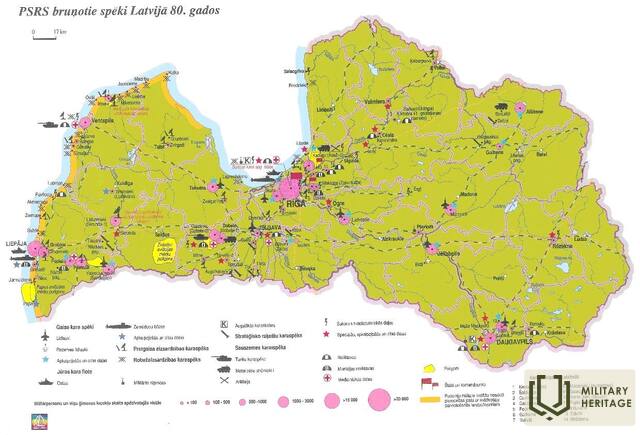

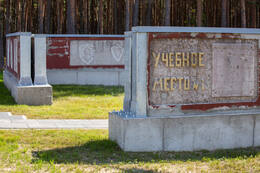
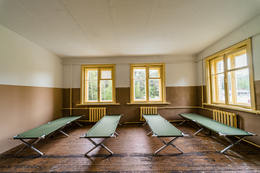
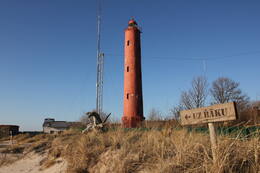
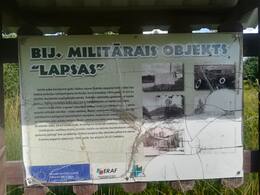
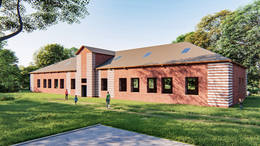
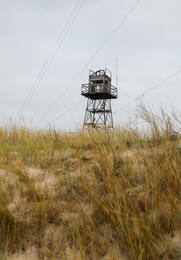

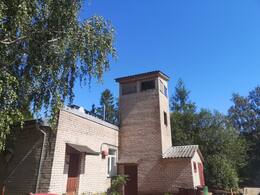
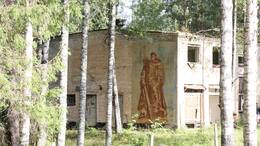
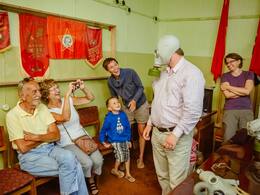
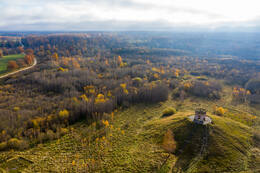
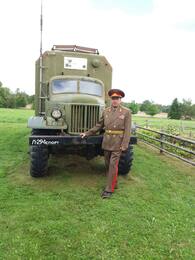
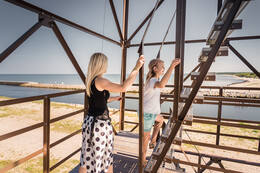
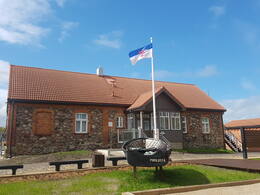
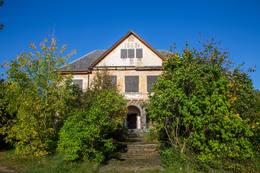
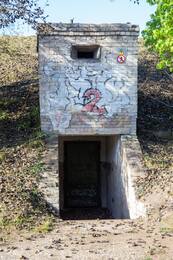
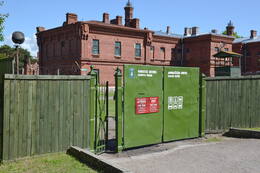
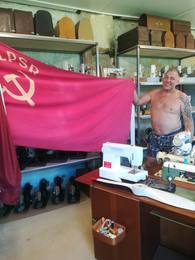
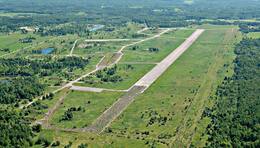
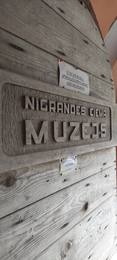
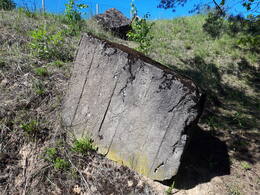


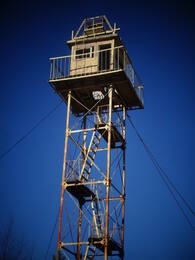
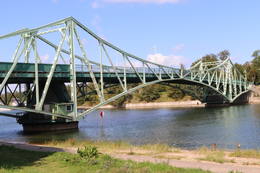
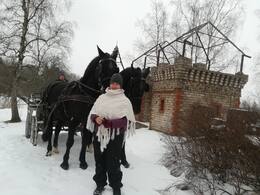
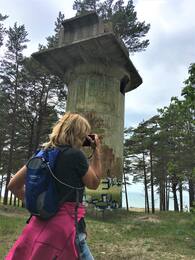
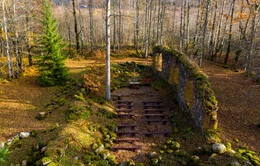
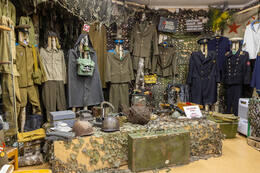
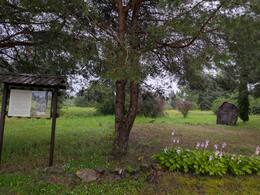
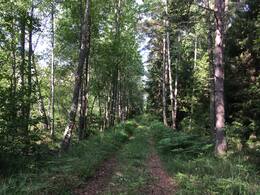
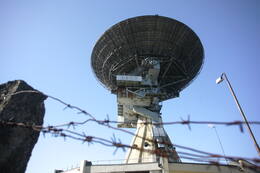
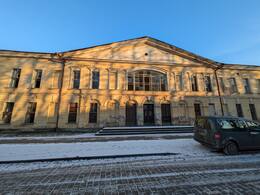
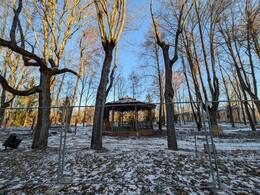

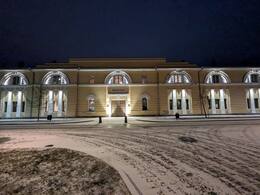
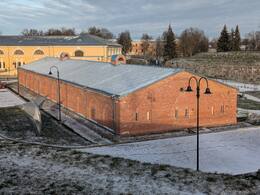
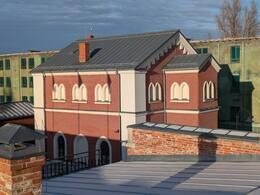
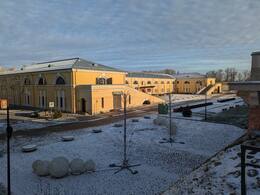
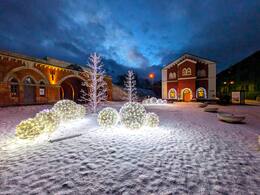
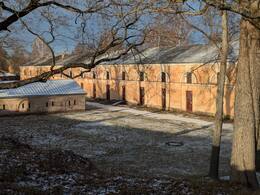
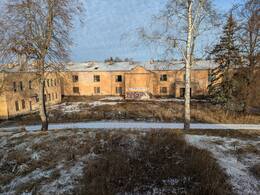
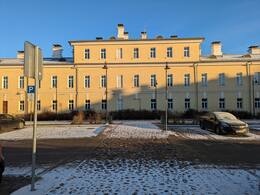
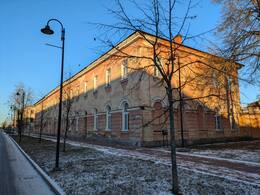
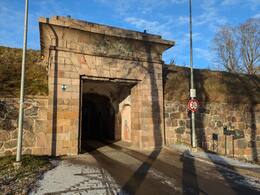
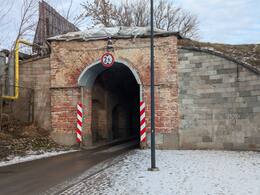
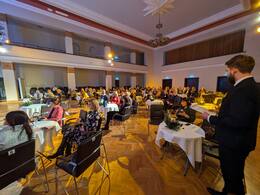
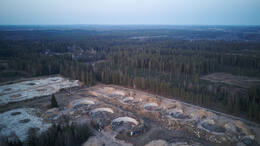
A total of around 400 Soviet troops were stationed in Latvia, in about 500 facilities, making for a total of more than 50,000 military personnel. ---------------------------- Why that nonsensical number of "400 Soviet troops" in all languages of your site???